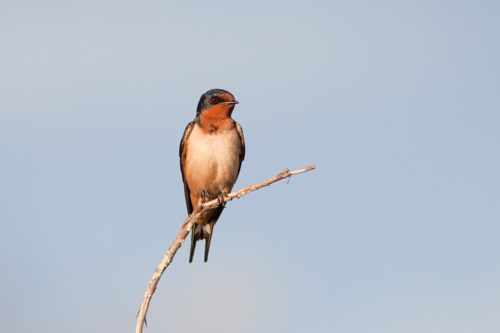
NPS/Gordon Dietzman IntroductionThe barn swallow's deeply forked tail provides exceptional maneuverability in flight as it pursues its insect prey and it is also used in attracting a mate. But that large tail also have disadvantages including increasing the demand on the bird's nutritional intake and may also increase the bird's vulnerability to predators. The barn swallow, unlike the more social bank swallows, usually feeds on low-flying insects and are often solitary hunters. As a result, you will often see only a few of these lovely birds swooping low over the water or land as they hunt. Also unlike bank swallows, barn swallows are not tied to specific nesting locations, such as embankments, but can build their mud nests where there is ample prey. Once nesting in caves, they now build their nests in human-made structures, such as barns (from which they get their name) and the underside of bridges. Identification
| |
Last updated: September 28, 2021
